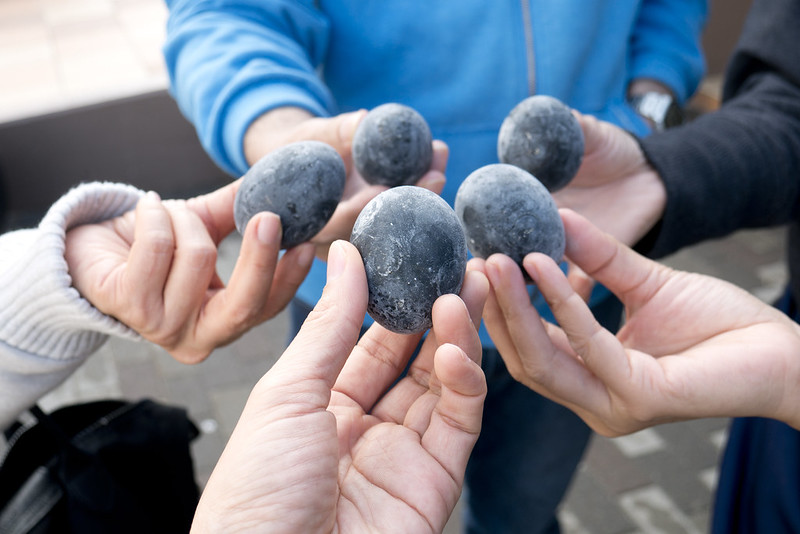
Ōwakudani Black Eggs
Ōwakudani, or Great Boiling Valley, is located in the mountain town of Hakone, Kanagawa Prefecture in Japan. It is a popular go to place for many visitors to witness its scenic views, volcanic activity, and most especially for the unique Kuro-tamago (black egg).
Ōwakudani valley boiling site.
Ōwakudani is an active volcano valley with sulfur vents and hot springs. Visitors flock to the valley to see breathtaking views of Mt. Fuji and the volcanic gases that rise from the ground. It can be reached via an aerial tram up to the hot springs, or walk up the 1 km path. There are a few hiking trails around the Ōwakudani station, but there is one specific trail that you simply cannot miss out on. It is an upward trek to the boiling site of the famous Ōwakudani black eggs. The 15-minute uphill climb is worth every step. Once you get to the top, you will have the chance to taste the kuro-tamago.
Ōwakudani Black Eggs are regular chicken eggs. It is the manner in which the eggs are boiled that makes them special. The eggs are boiled at exactly 80 degrees Celsius (176 deg. F) for about an hour in natural spring water, then steamed at 100 degrees (212 deg. F) for 15 minutes in steel baskets.
The spring water used to boil the egg contains sulfur and iron, which makes the eggshells turn black. It is rumored that eating these black eggs will add seven years to your life.
The Ōwakudani valley is also sometimes referred to as the Death Valley by locals. About 3,000 years ago, Mount Hakone erupted, leaving a hot spring-filled crater. The path leading to the black eggs are full of sulfuric geysers which can be dangerous. The area is prone to landslides caused by the constant volcanic activity. Conditions are potentially unsafe, and the walkway leading to the egg boiling springs is closed at times.


